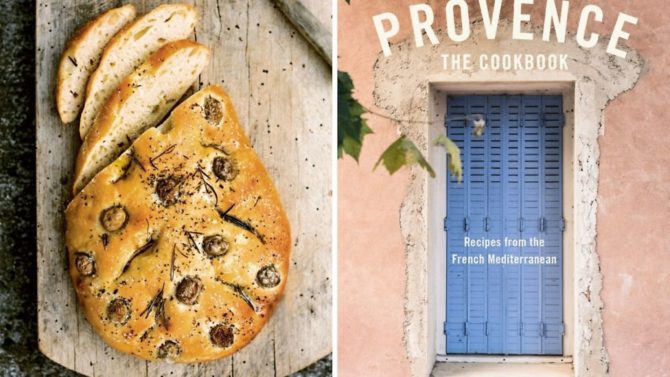Recipe: Olive and Rosemary Fougasse

Try recreating this traditional fougasse recipe from Provence: The Cookbook at home

Caroline Rimbert Craig’s maternal family hail from the southern foothills of Mont Ventoux, where the sun beats hard and dry, but aromatic herbs, vines and fruit trees prosper.
Provence: The Cookbook is her guide to cooking the Provençal way, for those who want to eat simply but well, who love to cook dishes that rhyme with the seasons, and who want to recreate the flavours of the Mediterranean at home, wherever that may be.
She says: “Many traditional Provençal recipes such as this one for fougasse, a bread enriched with olive oil, say to use eau de source, untreated water from a local spring. I once took joy in following such instructions to the letter, dutifully cycling to a parcel we call Canebiers and collecting water from the source there to see if it made a difference. I cannot be sure if it did but I enjoyed the whimsy.
“Like a Pompe à Huile or Couronne des Rois, fougasse is one for the weekend, for the kind of day you fancy spending at home baking something. If I’ve been invited round somewhere for supper and I have the time, I love to bring one of these for the apéro. Sun-dried or halved cherry tomatoes, thyme or even cooked lardons and grated cheese make nice alternative toppings.”
Ingredients
Serves 4
For the starter:
20g fresh yeast (or 7g dried yeast)
1 tsp sugar
50g strong white bread flour
50ml tepid water
For the fougasse:
300g strong white bread flour, plus extra for dusting
125ml tepid water
? tsp salt
50ml olive oil, plus extra for drizzling
handful of unpitted green or black olives
3 sprigs of rosemary
1-2 tsp salt flakes
1 tbsp oregano
Method
First activate the yeast: mix the starter ingredients together in a bowl (crumble the fresh yeast, if using), then cover with clingfilm. Set aside on the counter for an hour, until the dough has increased in size and bubbles are visible on its surface. Your starter is ready.
Begin the fougasse: sift the flour into a mixing bowl, add the tepid water, prepared starter, salt and olive oil. Mix well, then cover and set aside for five minutes. Transfer the dough to a clean, dry, lightly floured surface and begin to knead. Knead for 15 minutes until a stretchy, springy dough has formed, then shape into a ball and place back in the mixing bowl. Cover the bowl with clingfilm and place in a warm, draught-free spot to rise.
Once the dough has doubled in size, usually after 2-3 hours depending on the ambient temperature, knock back and knead once more briefly. Sprinkle flour over a baking tray and sit the dough on it. Roll into an oval shape, 2cm thick, then slice diagonal slits through the dough in a wheat pattern. Enlarge the holes using your fingers. Cover the fougasse with clingfilm or a damp tea towel and leave to rise again in a warm place for 1-2 hours. Towards the end of this prove, preheat the oven to 240C/220C fan/gas mark 9.
Remove the clingfilm or tea towel and lightly press olives into the surface of the dough. Pick the rosemary leaves off the sprigs and again lightly press into the dough. Sprinkle over the salt flakes, oregano and a little drizzle of olive oil. Bake the fougasse for 15-20 minutes. It will not go darker than a pale golden brown, but check it is cooked by tapping the base and listening for a hollow sound. Fougasse is best eaten within two days.
Provence: The Cookbook by Caroline Rimbert Craig is published by Kyle Books, £22.
___________________________________________________________________________________________________________________________________________________________________________________________________________________________________________
You might also like
Interview: Celebrity chef Raymond Blanc on the magic of cooking
A delicious guide to French biscuits
____________________________________________________________________________________________________________________________________________________________________________________________________________________________________________
Share to: Facebook Twitter LinkedIn Email


